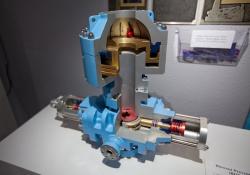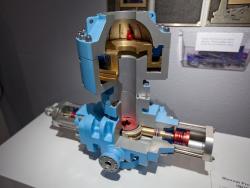This mechanism allowed the manual closing of a well, saved lives and prevented surface oil accumulation at drilling sites, quickly becoming an industry standard. In the early days of oilfield operations, there was no way to control the underground pressures encountered during drilling. When an oil or gas reservoir was tapped, wells were allowed to "blow out" until pressure was reduced sufficiently to allow capping. Many inventors attempted to develop a device to control such blowouts. In 1922, oil wildcatter James Smither Abercrombie (1891-1975) and machinist Harry S.
BOP

YearAdded:
Image Credit: Original Image: Flickr/Ed Schipul (CC BY-SA 2.0)Image Caption: A modern Blowout Preventer (BOP)Era_date_from: 1922
2003
Innovations

This mechanism allowed the manual closing of a well, saved lives and prevented surface oil accumulation at drilling sites, quickly becoming an industry standard. In the early days of oilfield operations, there was no way to control the underground pressures encountered during drilling. When an oil… Read More


